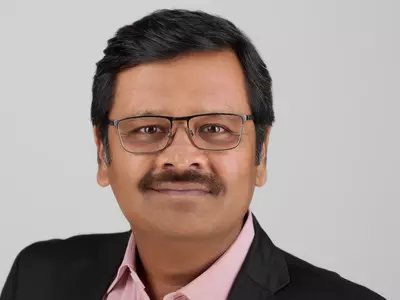National Voters' Day: How To Make India's Voter ID Card Virtually Unhackable

Free and fair elections are a signifier of any democracy's health. India - considered the world's largest democracy, celebrates National Voters' Day every year on January 25 on the eve of Republic Day.
In 1950 on January 25, the Election Commission of India was founded. Since 2011, January 25 is marked as National Voter's Day to improve voter participation and to spread awareness.
Over the last few years, India has made great strides in digitisation of citizen data and enrollment of voters. Any citizen of India can apply for Voter ID card through the EC website - allowing a hassle-free experience. While voting has to take place physically to ensure transparency and accuracy, are our Voter ID cards safe enough?
 Times of India
Times of India
Identification safety and why it matters for elections
To tackle the questions surrounding safety of our identity cards, Indiatimes caught up with Manoj Kochar, the Vice President of Authentication Solution Providers' Association (ASPA) - the world's first and only organisation of its kind that represents authentication solutions around the world.
A pioneer in physical and digital authentication solutions around the world in a range of industries from pharmaceuticals, food, beverage, and liquor, ASPA provides a series of solutions ranging from holograms, taggants, security inks, watermarks, nanotechnologies and more to limit the scope of tampering.
 Manoj Kochar, VP of ASPA
Manoj Kochar, VP of ASPA
For elections, safety is paramount. A small mistake could compromise not only democracy but also the citizen's trust in the democratic process. Kochar explained to us how current Voter ID cards and the entire process can be made safer. Besides offering holograms that are authentication tools, Kochar and team invited newer technologies "that provide authentication solutions" beyond the basic hologram.
Also read: Explained: Why National Voters Day Is Marked On January 25
"Every solution is customised," Kochar said while highlighting the need for "unique size, unique colours, unique set of security features" for just a simple hologram is not enough. Even a hologram has multiple layers of security features to ensure easy verification.
ASPA members currently do not provide security solutions to the Election Commission, Kochar claimed while highlighting how fragmented the current process is. "[EC] kind of subcontracts the making of these cards to the state election officers. And then they share the data with these contractors who will print the Voter ID card. And then that is handed over to the citizen."
"There are hundreds of personalisation vendors all over the country," he added while suggesting that "such a system can do with some improvement." When different vendors print a similar looking document, there are bound be some inconsistencies in terms of colour and primary markers. "It needs to be given a uniform look and feel where the basic template of the card is identical no matter where it comes from," ASPA Vice President told us while adding that "security features should also be identical."
Leaving it to the EC, Kochar suggested "different customisations for each state" while shedding light on the significance of Voter ID card, which not only establishes one's identity, but also gives people the right to vote.
Creating a "phygital future" for India and our IDs
Referring to the future of India as "phygital" (an amalgamation of physical and digital), Manoj Kochar was convinced that the physical dimension of documentation is not going away anytime soon. Is a single identification card the future? According to Kochar, Aadhar has the potential to become "all-encompassing."
The Election Commission has now started offering modern cards. Essentially, people of India now have two types of Voter ID cards depending on when they applied for it - the classic laminated paper one and the hard PVC one. Consistency for Voter ID cards could not only prevent fraud and errors, but could also make the process easier.
 BCCL
BCCL
"The physical card has security features... from very complex designs to guilloche patterns, which you typically find on a bank note," ASPA VP said while adding that a lot of complex features go into generating an identity card as complex as our Voter IDs. These features "can only be generated by a particular software, it cannot be replicated... it would probably have some hidden information, which is only visible under specialised lighting," he added.
Also read: Election Commission's 'cVIGIL' App Lets Voters Report Fraud In India: How To Use
Besides these signature hallmarks of a secure physical card, there are other features that keep our identity safe - ranging from "micro text that won't be visible to a normal person" to "embossed effects like the ones seen on Aadhar."
Colour-shifting effects that display different colours at different angles are also helpful in verification of documents. A combination of these factors that constitute "hidden information" would make the ideal Voter ID card unhackable - making it impossible for would-be counterfeiter to copy each aspect of its security, piling it with a hologram that runs its own set of features.
 BCCL
BCCL
A mix of these security features and uniformity across the country, according to Kochar could improve the security of our Voter ID documents. Most of these features are already employed by the Election Commission to expand voting rights to each citizen of India.
As India moves to celebrate its 73rd Republic Day to mark the declaration of independence from colonial rule, strengthening security measures for documents like Voter ID and Aadhar could embolden the country, its citizens, and the future of democracy.
For more in the world of technology and science, keep reading Indiatimes.com.

























